 February 6, 2020 John E. Ross, KD8IDJ, Editor
| ||||||
ARRL HF Band Planning Committee Seeks Comments on Recommendations The ARRL HF Band Planning Committee is seeking comments and suggestions from the amateur radio community on its report to the ARRL Board of Directors. At the Board's January meeting, the committee presented its specific recommendations in graphical form for each HF band and each US license class, with the goal of increasing harmony on the HF bands, particularly between CW and digital users. "In general, the committee is of the opinion that there is justification for additional space to become available for digital modes, as well as for the operation of digital stations under automatic control," the committee told the Board. "The very changes in spectrum usage that have required our committee's resurgence indicate that digital modes of communication are already increasing in popularity, and the trend is The committee also anticipates an increase in automatically controlled digital stations (ACDS). The report further points to "significant use" of modern data modes in emergency communication and said its recommendations provide significant support for the evolution and continued relevance of amateur radio. "Our failure to adapt to these needs could consign amateur radio to the technological scrap heap," the report said. The committee was revived last summer to consider conflicts between FT and JT modes and other modes. The panel's approach has been to designate distinct assignments for CW, narrowband (NB) data <500 Hz, wideband (WB) data <2800 Hz, and ACDS. For its work, the committee presumed approval of three ARRL petitions to the FCC: RM-11708 (WT Docket WT 16-239 -- "symbol rate" proceeding), RM-11759 (80/75 meter allocations), and RM-11828 (enhanced Technician privileges). The committee also assumed that users can agree to sharing arrangements within a given allocation -- narrowband versus wideband sharing within the ACDS allocation, for example. It also took into consideration how mode usage is regulated or planned elsewhere in the world. In terms of mode classes, the committee agreed on CW, NB data, WB data, NB with ACDS, and WB with ACDS. The committee said it considered these mode classes incompatible and that they should not have overlapping allocations, with the exception of CW, which is authorized within any amateur radio allocation. The committee's approach would maintain the existing low-end 25 kHz CW-only sub-bands for exclusive use by Amateur Extra-class licensees. The panel encouraged CW identification and a listen-before-transmitting protocol for ACDS, if feasible. It also decided that a single allocation for ACDS without regard to bandwidth would be the best approach. "We note that this will put responsibility on the digital community to hold an effective dialog on the issue and to then "Modern amateurs must expect to adapt to this kind of fluid assignment of spectrum to incompatible uses, using time-based sharing, rather than only a single assignment," the committee said, expressing the hope that as band plan/sharing agreements are reached that they consider the advantage of "non-simultaneous sharing possibilities." Reiterating the position ARRL has taken in recent FCC filings, the committee said it sees encryption and open-source enforcement matters as being outside the scope of the Band Planning Committee. The Committee would like comments by February 19. "The Auroral Connection" to Be Focus of 2020 HamSCI Workshop Registration is open for the third annual HamSCI Workshop for amateur radio operators and professional scientists, Friday and Saturday, March 20 - 21, at The University of Scranton. The theme of this year's workshop is "The Auroral Connection," and will include addresses by guest speakers, poster presentations, and demonstrations of relevant instrumentation and software. All radio amateurs, scientists, and anyone interested in ionospheric and space physics are welcome. The workshop will serve as a team meeting for the HamSCI Personal Space Weather Station project, a National Science Foundation (NSF)-funded project awarded to University of Scranton physics and electrical engineering professor Nathaniel Frissell, W2NAF. The project seeks to harness the power of a network of radio amateurs to better understand and measure the effects of weather in the upper levels of Earth's In addition to Scranton, the Personal Space Weather Station project includes participation from TAPR; the Case Western Reserve University Amateur Radio Club, W8EDU; the University of Alabama; the New Jersey Institute of Technology Center for Solar-Terrestrial Research; MIT Haystack Observatory; Dartmouth College, and the ham radio community at large. Noted contester and DXer Tim Duffy, K3LR, will deliver the keynote address. The chief operating officer and general manager at DX Engineering, Duffy chairs Contest University, the Dayton Contest Dinner, and the Top Band Dinner, as well as coordinates the Contest Super Suite. He is the founder and moderator of the popular RFI Reflector. Duffy serves on the ARRL Foundation Board of Directors as well as on the board of the World Wide Radio Operators Foundation (WWROF), and as chairman and president emeritus of the Radio Club of America. Other speakers at the workshop include Elizabeth MacDonald, the NASA researcher who founded and leads the Aurorasaurus project. She will discuss fundamentals of auroral physics, its optical signatures, and the Aurorasaurus citizen science project. James LaBelle, a professor of physics and astronomy at Dartmouth University and auroral radio physicist, and David Hallidy, K2DH, a retired microwave engineer who is also well-known for his work in auroral-mode propagation will also speak. Additional information on the conference is available on the HamSCI Workshop 2020 website. Undersea Expedition Planned to Retrieve Titanic's Radio Gear The company with sole rights to salvage artifacts from the RMS Titanic has gone to court to gain permission to carry out a "surgical removal and retrieval" of the Marconi radio equipment on the ship, a Washington Post article reports. The Titanic sank in 1912 on its maiden voyage after striking an iceberg in the North Atlantic. As the radio room filled with water, radio operator Jack Phillips transmitted, "Come at once. We have struck a berg. It's a CQD, old man," and other frantic messages for help, using the spark transmitter on board. CQD was ultimately replaced with SOS -- which Phillips also used -- as the universal distress call. The passenger liner RMS Carpathia responded and rescued 705 of the passengers.
As might be expected, the deteriorating Marconi equipment is in poor shape after more than a century under water. The undersea retrieval would mark the first time an artifact was collected from within the Titanic, which many believe should remain undisturbed as the final resting place of some 1,500 victims of the maritime disaster, including Phillips. The wreck sits on the ocean floor some 2 1/2 miles beneath the surface, remaining undiscovered until 1985. A just-signed treaty between the UK and the US grants both countries authority to allow or deny access to the wreck and to remove items found outside the vessel. "This momentous agreement with the United States to preserve the wreck means it will be treated with the sensitivity and respect owed to the final resting place of more than 1,500 lives," British Transport and Maritime Minister Nusrat Ghani said in a statement. The request to enter the rapidly disintegrating wreck was filed in US District Court in Eastern Virginia by RMS Titanic, Inc. of Atlanta, Georgia, which said that it hopes to restore the Titanic radio transmitter to operating condition, if it is allowed to go forward. The company plans to use a manned submarine to reach the wreck and then deploy a remotely controlled sub that would perforate the hull and retrieve the radio equipment. The K7RA Solar Update Tad Cook, K7RA, Seattle, reports: We saw a nice run of Cycle 24 and Cycle 25 sunspots from January 24 through February 1. The daily sunspot number reached a short-term peak of 18 on January 26. Average daily sunspot numbers declined from the 11.1 reported last Predicted solar flux for the next 45 days is 70 on February 6 - 13; 72 on February 14 - 20; 73 on February 21 - 22; 74 on February 23 - 29; 72 on March 1 - 3; 71 on March 4 - 11; 72 on March 12 - 18; 73 on March 19 - 20, and 74 on March 21. Predicted planetary A index is 12 and 8 on February 6 - 7; 5 on February 8 - 24; 10 on February 25 - 26; 5 on February 27 - 29; 8 on March 1 - 3, and 5 on March 4 - 21. Sunspot numbers for January 30 through February 5 were 11, 11, 11, 0, 0, 0, and 0, with a mean of 4.7. The 10.7-centimeter flux was 74.1, 73.9, 72.5, 72.2, 72.1, 70.3, and 70.6, with a mean of 72.2. Estimated planetary A indices were 12, 8, 6, 6, 5, 5, and 5, with a mean of 6.7. Middle latitude A index was 9, 6, 4, 4, 3, 5, and 4, with a mean of 5. A comprehensive K7RA Solar Update is posted Fridays on the ARRL website. For more information concerning radio propagation, visit the ARRL Technical Information Service, read "What the Numbers Mean...," and check out K9LA's Propagation Page. A propagation bulletin archive is available. Monthly charts offer propagation projections between the US and a dozen DX locations. Share your reports and observations. Just Ahead in Radiosport
See the ARRL Contest Calendar for more information. For in-depth reporting on amateur radio contesting, subscribe to The ARRL Contest Update via your ARRL member profile email preferences. Clayton Coleman, W5PFG, Elected AMSAT President During a teleconference meeting this week, the AMSAT Board of Directors elected Clayton Coleman, W5PFG, of Granbury, Texas, as AMSAT President. Coleman had served as a member of the Board of Directors and as AMSAT Secretary from 2017 until 2019, and he has volunteered in several other capacities for AMSAT, including as chair Coleman was introduced to amateur radio in space through the SAREX program -- the forerunner to ARISS -- and the Russian Mir space station. His interest in setting up an AX.25 BBS and nodes in the early 1990s led him to try making contacts via the Mir Personal Message System (PMS) and digipeater. In 2011, Coleman became interested in OSCAR satellites and began chasing operating awards. Coleman's focus as president will be working with members to improve organizational processes and aligning them with strategic goals. Professionally, Coleman works in the industrial process control sector both as a consultant and business development manager. AMSAT members will have an opportunity to meet Coleman at Orlando HamCation on Saturday, February 8, when he will greet visitors at the AMSAT booth from 9:30 - 10:30 AM and 2 - 3 PM. He will also speak at the AMSAT Forum at 12:30 PM on Saturday in Room CS III at the Lakeside Pavilion. -- Thanks to AMSAT News Service ARISS Announces Hosts for Space Station Ham Radio Contacts Amateur Radio on the International Space Station (ARISS) has announced the names of schools and organizations selected to host Ten proposals were accepted to move forward in the selection process and placed in a scheduling queue for an amateur radio contact between July and December 2020. Although ARISS expects to schedule all 10 during this period, changes to NASA crew availability may force postponement of some contact opportunities until the first half of 2021. The schools and host organizations are:
7X7X DXpedition Showcases Cooperation and Youth A cooperative agreement the Algerian and Tunisian IARU member-societies signed in 2014 to reinforce relations through joint activities bore fruit with the 7X7X DXpedition to Algeria late last year. Preparations began in late October 2019, with the goal of activating Algeria on the low bands to benefit from the slump in the solar cycle. Co-leader Ash Chaabane, 3V8SF/KF5EYY, said organizers wanted to take advantage of the DXpedition to boost interest among younger hams. Four young people were involved in the event as a result: Sarra, 7X2QV; Lotfi Kara, 7X2QC; Marwa, 3V8CB, and Ahmed Boubaker, 3V1B/KG5OUE, who are all in their 20s. Three of them have In addition to Chaabane, the team included co-leader Afif Ben Lagha, 7X2RO; Brahim Mohamed, 7X3TL; Redha el Bahi, 7X5QB, and Abdelghani Mesbah, 7X2TT/M0NPT. The Tunisian team flew from Tunis to Algiers, arriving on December 28 in Bejaia to join the Algerian team. "We immediately started putting up antennas," Chaabane said. 7X2TT kicked off the operation through the Es'hail satellite, demonstrating for the benefit of the younger operators how ham radio satellites work. The rest of the team built a nearly 40-foot tall inverted L for 160 meters; a full quarter-wave vertical for 80 meters; a two-element Fritzel Yagi for the high bands; a seven-element Yagi for VHF; a K9AY receiving loop, and a ground plane for 30 meters, which operated on 40 meters as well with the addition of a loading coil. "We did our best to operate two stations at a time," Chaabane recounted. "We had quite few technical issues, but we overcame them." 7X7X ended up logging 5,800 contacts in 4 days, and the operating schedule was intentionally flexible. The mode breakdown showed 38% CW, 55% SSB, and 7% FT8. "We had 1,121 QSOs on 160 and 798 on 80," Chaabane said, with 356 US and 30 JA contacts on 160 meters. One objective of the DXpedition was to bond and form a strong team capable of larger operations in the future, Chaabane said. The DXpedition team expressed its appreciation for the support from the Northern California DX Foundation (NCDXF), the Lone Star DX Association (LSDXA), and the Mediterraneo DX Club (MDXC), as well as some individual hams. "This support is a solid investment into the future of the ham radio hobby," Chaabane said. "We urge all DXpeditioners to involve youngsters in their future trips and do their best to make it easy and least costly for them." -- Thanks to IARU President Signs PIRATE Act to Combat Illegal Broadcasting On January 24, President Donald Trump signed into law the "Preventing Illegal Radio Abuse Through Enforcement Act," or the PIRATE Act. The measure, which amends the Communications Act of 1934, authorizes enhanced penalties for violators. Under the new law, pirate radio broadcasters would be subject to a fine of not more The FCC is to submit to the House Committee on Energy and Commerce and the Senate Committee on Commerce, Science, and Transportation a report summarizing the implementation of this section and associated enforcement activities for the previous fiscal year. The new law also requires "annual sweeps," during which FCC personnel will be assigned to "focus specific and sustained attention on the elimination of pirate radio broadcasting within the top five radio markets identified as prevalent for such broadcasts." The Commission also "shall conduct monitoring sweeps to ascertain whether the pirate radio broadcasting identified by enforcement sweeps is continuing and whether additional pirate radio broadcasting is occurring." Under the new law, the FCC will change its rules so that it proceeds directly to issuance of a Notice of Apparent Liability (NAL) without first issuing a Notice of Unlicensed Operation (NOUO). The FCC will develop and publish a database of all licensed AM and FM broadcasters, accessible directly from the FCC home page. The FCC is also required to publish a list of "all entities that have received a Notice of Unlicensed Operation, Notice of Apparent Liability, or forfeiture order," as well as "each entity...operating without a Commission license or authorization." The law defines pirate radio broadcasting as transmitting within the AM and FM bands without an FCC license, but excluding unlicensed operations in compliance with Part 15. In Brief...
Upcoming ARRL Section, State, and Division Conventions
Find conventions and hamfests in your area.
. .
Subscribe to...
Free of charge to ARRL members...
| ||||||
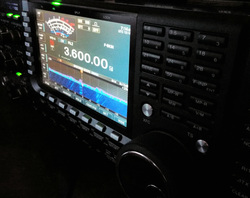 expected to continue or even accelerate. To this end, we have tried to ensure that digital allocations are sufficient for at least a modicum of growth."
expected to continue or even accelerate. To this end, we have tried to ensure that digital allocations are sufficient for at least a modicum of growth." self-regulate the users of this segment to adhere to the eventual agreement." A need for flexibility in allocations is desirable, the committee said, and considered whether allocations might be time-of-day or time-of-week dependent, for example.
self-regulate the users of this segment to adhere to the eventual agreement." A need for flexibility in allocations is desirable, the committee said, and considered whether allocations might be time-of-day or time-of-week dependent, for example.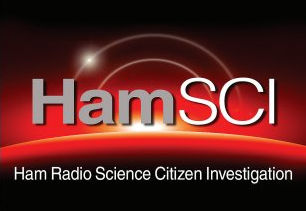 atmosphere. Through the grant, Frissell, a space physicist, will lead a collaborative team that will develop modular, multi-instrument, ground-based space science observation equipment and data collection and analysis software. He will also recruit multiple universities and ham radio users to operate the network of Personal Space Weather Stations developed.
atmosphere. Through the grant, Frissell, a space physicist, will lead a collaborative team that will develop modular, multi-instrument, ground-based space science observation equipment and data collection and analysis software. He will also recruit multiple universities and ham radio users to operate the network of Personal Space Weather Stations developed.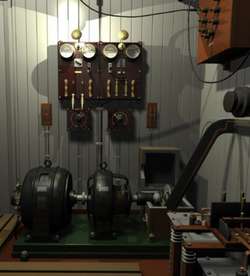
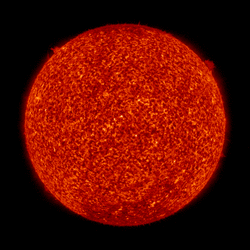 week to 4.7 during the current reporting week, January 30 - February 5.
week to 4.7 during the current reporting week, January 30 - February 5.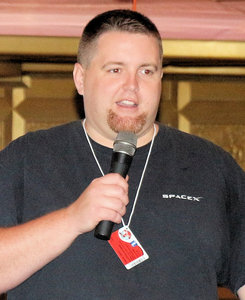 of the 2016 AMSAT Space Symposium. He succeeds Joe Spier, K6WAO, who resigned recently, citing personal reasons, after being in office since October 2017.
of the 2016 AMSAT Space Symposium. He succeeds Joe Spier, K6WAO, who resigned recently, citing personal reasons, after being in office since October 2017.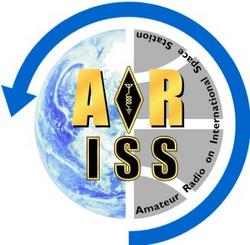 amateur radio contacts with International Space Station crew members during the second half of 2020.
amateur radio contacts with International Space Station crew members during the second half of 2020.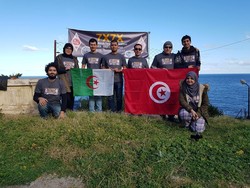 participated in Youngsters On The Air (
participated in Youngsters On The Air (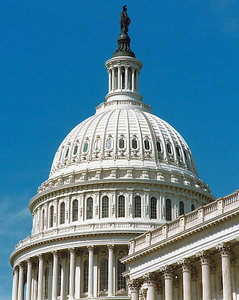 than $2 million, and violators could be fined up to $100,000 for each day during which an offense occurs. The new law stipulates that the FCC "shall not decrease or diminish the regular enforcement efforts targeted to pirate radio broadcast stations for other times of the year."
than $2 million, and violators could be fined up to $100,000 for each day during which an offense occurs. The new law stipulates that the FCC "shall not decrease or diminish the regular enforcement efforts targeted to pirate radio broadcast stations for other times of the year."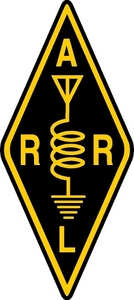 Brief Interruptions of ARRL Headquarters Systems are planned for Thursday, February 13. The ARRL IT Department anticipates two short interruptions to these Headquarters-based systems: Logbook of The World; Online DXCC; International Grid Chase Archive; National Parks on the Air Archive; Centennial QSO Party Archive, and the W1AW EchoLink Conference Server. The interruptions should occur on Thursday, February 13, between 1200 - 2200 UTC. Each interruption should be less than 10 minutes in length.
Brief Interruptions of ARRL Headquarters Systems are planned for Thursday, February 13. The ARRL IT Department anticipates two short interruptions to these Headquarters-based systems: Logbook of The World; Online DXCC; International Grid Chase Archive; National Parks on the Air Archive; Centennial QSO Party Archive, and the W1AW EchoLink Conference Server. The interruptions should occur on Thursday, February 13, between 1200 - 2200 UTC. Each interruption should be less than 10 minutes in length..jpg) Former ARRL East Bay Section Manager Ti-Michelle Connelly, NJ6T, of Yuma, Arizona, died late last week. She served as SM from 2003 until 2007. An ARRL Life Member, she was 72. The California native also held other Field Organization appointments, including Net Manager, Affiliated Club Coordinator, Assistant Section Manager, and Official Emergency Station. Connelly was also an ARRL VEC and W5YI VEC Volunteer Examiner. "Her spirit and fun will be sorely missed by many of us this year," said a friend, Kristen McIntyre, K6WX.
Former ARRL East Bay Section Manager Ti-Michelle Connelly, NJ6T, of Yuma, Arizona, died late last week. She served as SM from 2003 until 2007. An ARRL Life Member, she was 72. The California native also held other Field Organization appointments, including Net Manager, Affiliated Club Coordinator, Assistant Section Manager, and Official Emergency Station. Connelly was also an ARRL VEC and W5YI VEC Volunteer Examiner. "Her spirit and fun will be sorely missed by many of us this year," said a friend, Kristen McIntyre, K6WX.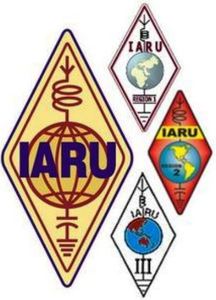 The International Amateur Radio Union (
The International Amateur Radio Union (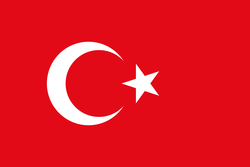 Amateur radio volunteers in Turkey supported the response to a powerful magnitude 6.8 earthquake that struck the province of Elazig on January 24. Radio amateurs affiliated with the national International Amateur Radio Union member-society
Amateur radio volunteers in Turkey supported the response to a powerful magnitude 6.8 earthquake that struck the province of Elazig on January 24. Radio amateurs affiliated with the national International Amateur Radio Union member-society 







